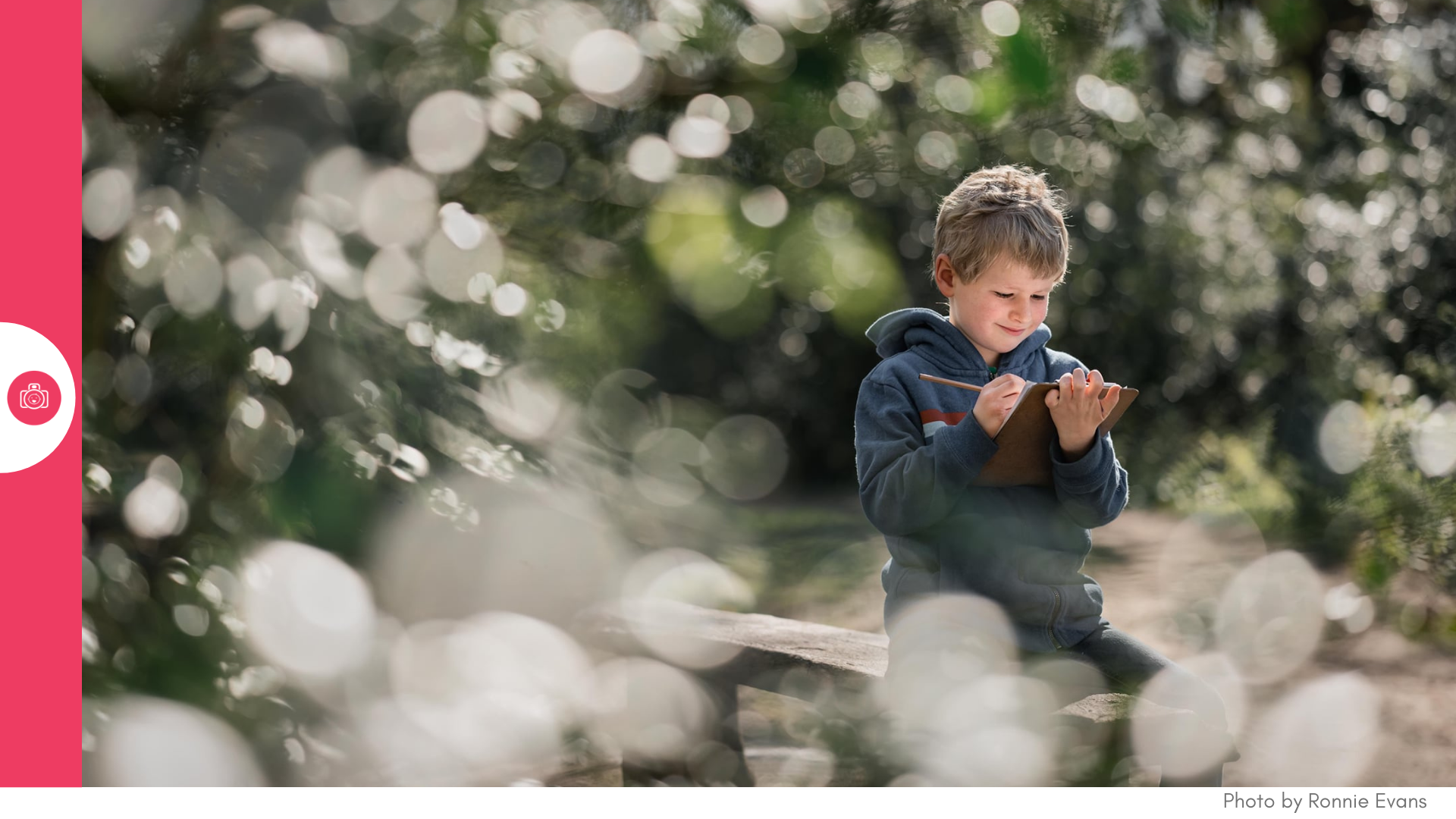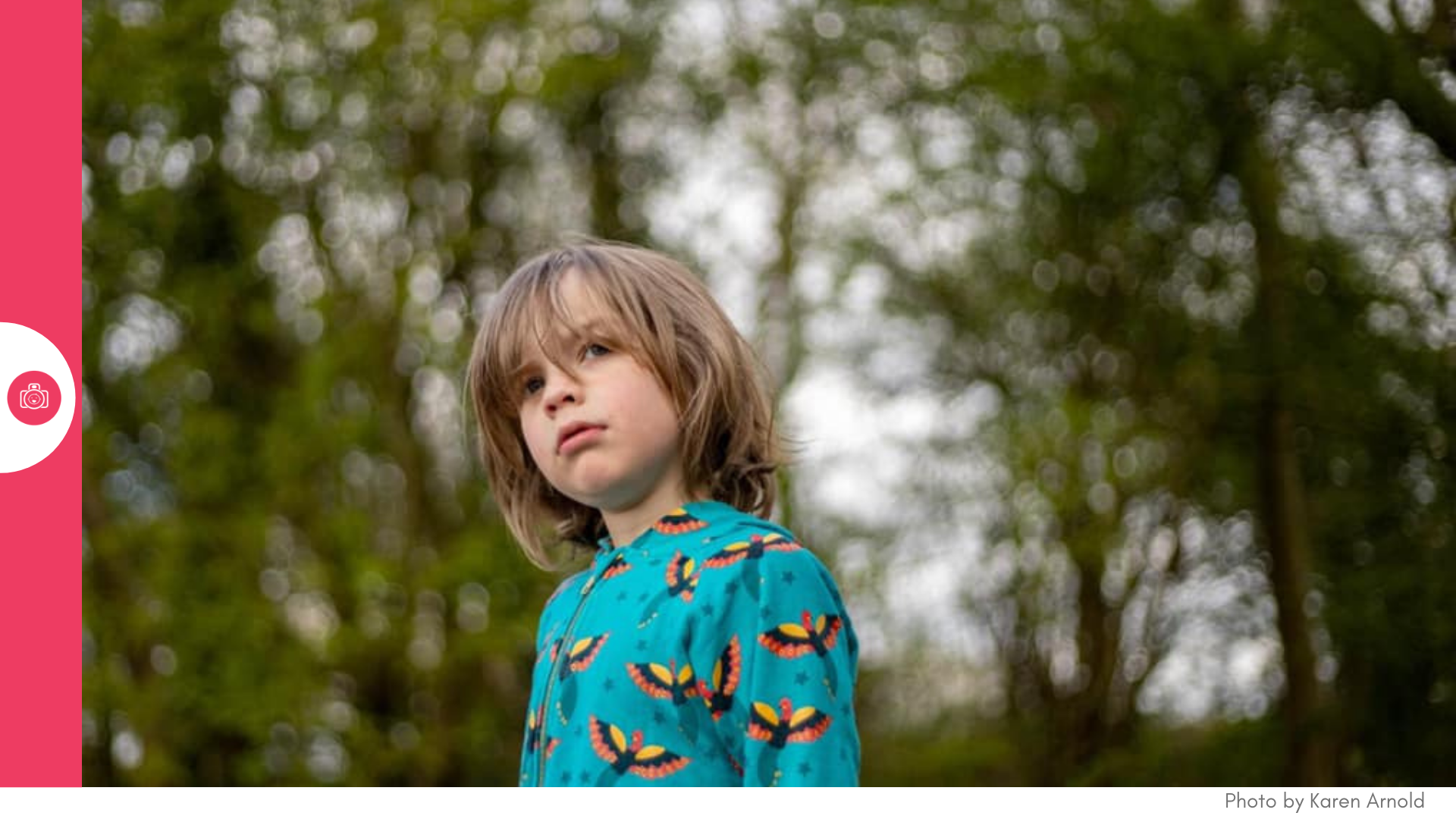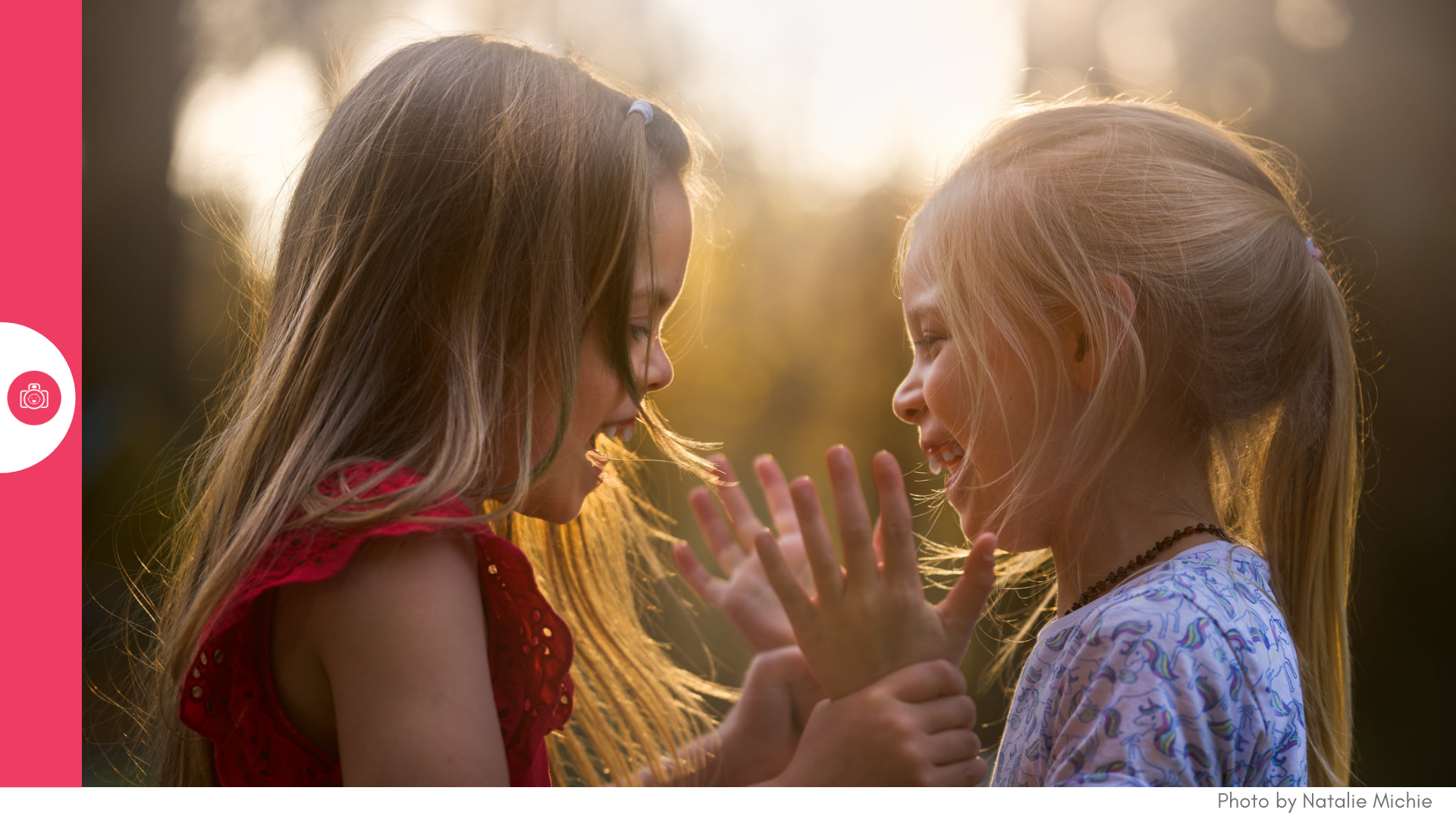Beautiful Spring light!
One of the things I love about spring is the light - unlike the dull greyness of winter or warm, hazy tones of summer, spring light is sharp, bright and intense!

Which is all great, until you start taking photos and you realise that some of those qualities are also a challenge for the photographer.
That beautiful brightness means we often end up with patches of really bright sunlight and patches of pretty hard and dramatic shadows. But we can still turn those challenges into beautiful photos. But how?
Let me ask you a question:
Imagine you go out and about in a park or similar, it's mid morning, bright and sunny day, you spot a pretty patch of flowers, and you want to take a photo of your child near said clump of flowers ( of course ytou are paying attention to the colours and the depth that we practiced in the last 2 days).
Where should you position your child in relation to the sun, for the best photo?
- Do you place the sun behind you so it shines towards your child?
- Do you position yourself so that the sun is behind them and you shoot towards the light?
The answer is...

... complicated.
If you know how to work with light, both these scenarios can help you produce great images. The key thing here is how well you can work with your camera to make the most of the light / react to it appropriately.
I'm not going to pretend that I will solve all your light problems here - in our regular courses we have lots of time dedicated to learning light and working with light, but I can show you what to pay attention to and how to react. And maybe a trick or two if you fancy a challenge.
So let's consider the two options I laid out above, starting from the first one:
1. Placing the sun behind you so it shines towards your subject.
This, I'm afraid to say, is going to be my least favourite scenario. Having your child face the sun, means they are now 100% squinting, pulling faces, or if wearing a hat, with a deep dark shadow over their eyes. really really not ideal.

How to do it better?
a) Find shade: if you can fine some shade, place your subject at the edge of a shadow facing the light - they will still get the benefit of the light but will also be protected from its harshness.

b) Turn your subject away slightly: if you can't find a shade, change direction a little bit - move around so that your subject is turned with their side to the light - 1/4 turn from the light works better than a full turn. And that little quarter turn is enough to just get the sun out of their eyes. You will still have some harsher light on part of their face, but at least, they won't be uncomfortable.

2. Placing your subject with their back to the light
On the face of it, it shouldn't work - with all the light behind them, they're effectively sitting in their own shadow. Shooting towards a bright sky is also more likely to result in a blank sky rather than a pretty blue one. So is this a complete no go?

Not exactly. There are ways, you can make it work.
The first one needs you to find something that will filter that back light and protect your subject. Think trees, or not very dense bushes or similar - essentially something that can still let a bit of that light go through, but without it being one masse of light if that makes sense. At this point in the spring the trees don't yet have a full coverage of leaves, so it's not too difficult to find these.

And here is the best bit - when the light filters through those little gaps between branches, it creates, what we call bokeh - spots of light, that give an effect of genuinely 'sparkling' the background. I absolutely love that effect and it can really liven up an otherwise 'meh' photo. You may be able to use this technique even on a slightly overcast day!
It works best if you are able to make the background blurry - if you remember from our last lesson, two elements play a part here: wide aperture ( use portrait mode on your camera if you can't use it manually) and / or zooming in ( you focus on your subject closer to you, NOT the background)
We gave a 'natural bokeh' challenge to our student and alumni community recently - looks how well they have done!!!





And for something a little different :
If you want to try something else with the light coming from behind your subject, and you know what you're doing with your camera settings, try creating a starburst - to do so, you will need light that 'just' peeks our from behind an obstacle ( so you get a little bit of a sunray rather than the full blast) and you need to set your aperture to a narrow setting ( think F22 and similar) and your shutter speed on the longer side. It should help you produce a good looking starburst - but be aware that some lenses are much better at producing those than others.

The background looks great, but my subject's face looks dark!?
A problem which sometimes occurs at this point is that your subjects face can be a little overshadowed. I have two solutions for you:
a) flash - yup, that very same you were probably trying to avoid. But hear me out - when your camera knows that here is generally a fair amount of light, the flash it sends will be quite a weak one, enough to fill in some of the shadows, but not enough to override the overall look and light in the image.
b) editing - I firmly believe that editing is a really integral tool in any photographer's toolkit. It's definitely a skill, and learning how to edit your images to really get the best out of them takes time and in fact we teach Editing in a full 4 week course. But for little touch ups, to brighten up a part of the photo that would otherwise be a loss, you could even just use a free app such as Snapseed and within the Tools section there pick a Brush set to either Dodge or Exposure and literally paint over an image to brighten it up.

But I have no trees to filter my light! We're in a field!
If you don't have a useful tree area to filter the light for you, you may need to get a little technical and override the way your camera works the light. Typically, when you point your camera at a subject that's set against a bright background, the camera will end up making your subject look a little too dark.
But there is a setting on your camera which can help you override it - it's called exposure compensation and it usually looks like a little +/- button or has a separate dial with a scale going from -3 to +3 or similar.
By nudging it towards the plus values, you are forcing the camera to override what it thinks the good exposure is, and instead take your correction - even on auto! SO if you take a photo and your subject is too dark, go to your Exposure compensation and nudge it to +1, if it's not enough go to +2 or even +3 - how much you will need will depend on your light. Just be aware that to make your subject bright, you may end up with the background overbrightened, so it's a question of what matters to you more - well exposed person, or well exposed background.

VERY IMPORTANT : once you've taken the photo, remember to bring the exposure compensation back to zero, otherwise it will keep brightening everything up, when you really don't want it!
WHEN to find beautiful light?
The best light for photography is either the morning , or afternoon, when the sun hits the earth at a slight angle. The worst time is unfortunately when we tend to be out - that is midday. The reason for that is : at that time, the light falls down in a straight vertical line. This means we end up having really bright highlights on the top of our kids heads, and really dark shadows ( panda eyes) under their eyes, noses and chin
If you have to be out and about at that time, try to find some open shade instead - I know it sounds counterintuitive, but it will help even out the light and make your subject look much better. Look for the edges of the shade and face towards the light for the best effect.
But if you can control when you go to take photos, do aim for later in the day - thankfully we're now into gorgeously long days with plenty of light - definitely worth getting out and about then!

And what if it's overcast?
An overcast light may not produce the same excitement as far as sparkly bokeh or starbursts are concerned, but it DOES produce much more even light which is a lot easier to work with and can actually bring out the colours of your subjects beautifully. A lightly overcast sky, with hints of blue sky in between is the ideal weather to go somewhere like a flower field as you will be able to avoid the intense, unforgiving light, keep away the deep shadows, and produce beautifully balanced effects, with plenty of detail both on your subject and in the sky.
But if you can, with the overcast sky, try to get your subject to face in the direction the light is coming from. Even behind the clouds ( unless they're super heavy) you can usually tell where the light is coming from. It will make difference to how much light there will be in their eyes - and it will show! I promise!

Day 3 Challenge
I fully appreciate that depending on the weather, you may or may not be able to do much with the info in this lesson. So if you don't have good weather , don't worry- bank this lesson for another day and try then - hopefully between today and Monday afternoon ( when we have the deadline for prize draw submissions) , something will come up. If not, I did say that for the purpose of having your photos count towards being able to take part in the prize draw, all you need is photos representing 4 out of the 5 themes, so if you need to miss this one, its OK.
Now onto your challenge :
Take an image trying to be mindful of where the light falls from on your subject and adjust accordingly. I'm not being prescriptive here because I want you to look and notice where your light is and what it is doing to your subject. When you post your photos, I want you to tell us about the light - for example, 'light from behind, filtered by the trees', or 'light from the front, using the shade to shelter', or 'light from the top, but the kids wouldn't budge!'
JUST ANOTHER PHOTO COURSE NOT
Let’s face it. There is a myriad of photo courses out there.
So what makes OUR students progress so well and give us the glowing reviews we get from them?
It's that we don't just sell you a course and bid you goodbye. All classes are instructor-led and limited in size so that we can give you personal, video feedback on your images every week. So you get advice tailored to you and your level.
We also go live with you through weekly live classes and we support you through a dedicated Facebook group.
And after the course, we invite you to our Alumni group where you can connect with other like-minded parents and take part in weekly and monthly shooting challenges as well as get help and advice.
support + community = growth



